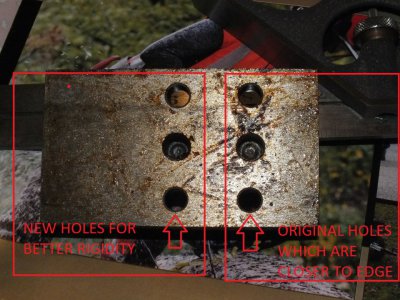- Joined
- Feb 7, 2013
- Messages
- 2,487
I was thinking of naming this post: Turning a sow's ear into a silk purse" but went for more traditional wording. My project started with a rusty 6 inch round
by two inches thick piece of unknown material cut with a plasma cutter. It has been laying under the lathe of several years so decided to try make something
out of it. It was the rough diameter for what I would need to operate the lathe without the compound. Machining was pretty straight forward until I needed to
It was the rough diameter for what I would need to operate the lathe without the compound. Machining was pretty straight forward until I needed to
use a Woodruff cutter to make the grooves where the base of the tool post would fit. I didn't work it very hard but it wasn't long and it was having a hard time
making chips. I see the cost of cutters has doubled as of late so I welded a big washer onto a piece of 9/16 rod and added some carbides to the washer face.
I see the cost of cutters has doubled as of late so I welded a big washer onto a piece of 9/16 rod and added some carbides to the washer face.
An old carbide tooth 10 inch saw blade served as a donor for the carbide teeth. The chips were tiny so the grooving operation took several hours to complete
but it did get the job done. In my free time, I will make a better one with more teeth for future use. My only regret is that I didn't take a photo of the chunk of
steel before I started working on it.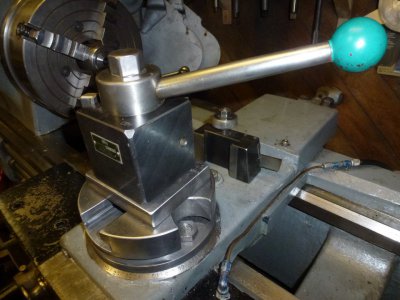
I have no idea what this thing is called but it eliminates the compound if you desire more rigidity when using the lathe probably for cut off operations.
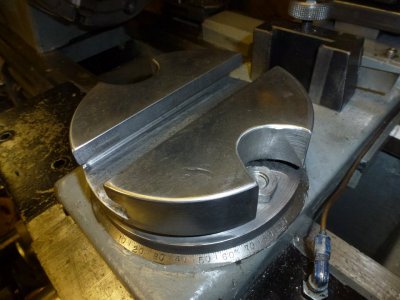
This it it, not perfect so I will call it pretty good.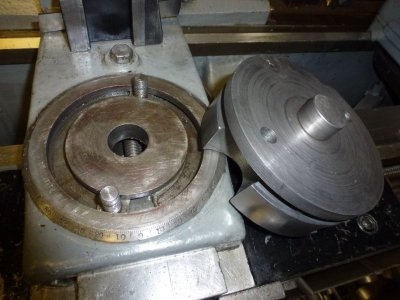
On the left is where the compound goes and on the right is the adapter to run the lathe without one.
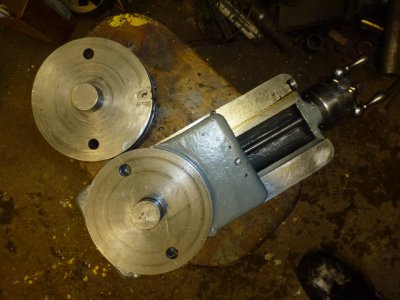
On the left is the adapter with the compound on the right. I had to patch up the groove cut by the plasma cutter with some weld but it's
not visible while using it.
The wind is blowing from the north and it is supposed to be 20 below zero tonight so maybe a good day to clean all the chips I made in the shop yesterday.
by two inches thick piece of unknown material cut with a plasma cutter. It has been laying under the lathe of several years so decided to try make something
out of it.
use a Woodruff cutter to make the grooves where the base of the tool post would fit. I didn't work it very hard but it wasn't long and it was having a hard time
making chips.
 I see the cost of cutters has doubled as of late so I welded a big washer onto a piece of 9/16 rod and added some carbides to the washer face.
I see the cost of cutters has doubled as of late so I welded a big washer onto a piece of 9/16 rod and added some carbides to the washer face.An old carbide tooth 10 inch saw blade served as a donor for the carbide teeth. The chips were tiny so the grooving operation took several hours to complete
but it did get the job done. In my free time, I will make a better one with more teeth for future use. My only regret is that I didn't take a photo of the chunk of
steel before I started working on it.

I have no idea what this thing is called but it eliminates the compound if you desire more rigidity when using the lathe probably for cut off operations.

This it it, not perfect so I will call it pretty good.

On the left is where the compound goes and on the right is the adapter to run the lathe without one.

On the left is the adapter with the compound on the right. I had to patch up the groove cut by the plasma cutter with some weld but it's
not visible while using it.

The wind is blowing from the north and it is supposed to be 20 below zero tonight so maybe a good day to clean all the chips I made in the shop yesterday.


